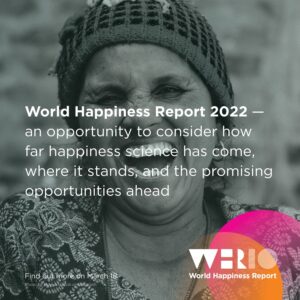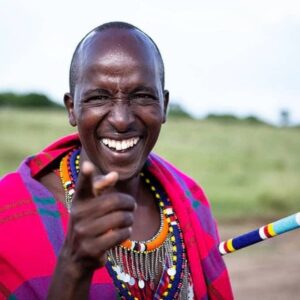» posted on Monday, September 5th, 2022 by Linda Lou Burton
Warm Puppies
 Charles Schulz, who had a knack for explaining the obvious, once wrote a book about happiness. Remember Happiness is a Warm Puppy? It doesn’t take more description than that to know what he’s talking about! Just saying those words makes you feel happy, unless you’re really allergic to dogs, or once was terrorized by a German shepherd.
Charles Schulz, who had a knack for explaining the obvious, once wrote a book about happiness. Remember Happiness is a Warm Puppy? It doesn’t take more description than that to know what he’s talking about! Just saying those words makes you feel happy, unless you’re really allergic to dogs, or once was terrorized by a German shepherd.
For the last ten years, statistical PROOF of happiness has been the goal of a group of learned, detail-specific folks who have been asking questions and analyzing data in 150 countries. And producing The World Happiness Report, giving us a picture of our global joy, or unrest.
What exactly do they consider? Some basic things you’d expect based on where you live: life expectancy in your country, GDP per capital in terms of purchasing power, freedom to make choices about what you do with your life, perceptions of corruption in your government, and amount of social support. Personal attitudes and experiences come into play as well: did you do something yesterday that made you laugh? Did you do something interesting, or learn something new? Did you donate money to a charity? Do you have friends you can count on?
 I won’t get into the statistical methods used, or the pages and pages (and pages) of data, but here’s a link to the entire project: https://worldhappiness.report/ and I encourage you to take a look. It’s fascinating! This year in particular, because they focused on the impact of COVID. With the world entering the third year of the pandemic, the report has three areas of focus in 2022: looking back; looking at how people and countries are doing in the face of COVID; and looking ahead to how the science of well-being is likely to evolve in the future.
I won’t get into the statistical methods used, or the pages and pages (and pages) of data, but here’s a link to the entire project: https://worldhappiness.report/ and I encourage you to take a look. It’s fascinating! This year in particular, because they focused on the impact of COVID. With the world entering the third year of the pandemic, the report has three areas of focus in 2022: looking back; looking at how people and countries are doing in the face of COVID; and looking ahead to how the science of well-being is likely to evolve in the future.
On the positive side, the most remarkable change was the global upsurge in benevolence in 2021. In every global region, there have been large increases in the proportion of people who give money to charity, help strangers, and do volunteer work. COVID also demonstrated the crucial importance of trust for human well-being. Deaths from COVID during 2020 and 2021 were markedly lower in those countries with higher trust in public institutions, and where inequality is lower.
The happiest countries in 2022? Finland, Denmark, Iceland, Switzerland, and the Netherlands make up the Top Five. The US came in at #16 – despite our low rankings in safety, we’re a country with a high life expectancy (78 for men, 83 for women), and despite our perceptions of too-low wages, a per capita GDP of over $62K. Much to be happy about!
Kenya and Tanzania ranked quite low according to those measures; life expectancy in both countries is in the low 60s for men and women; per capita GDP is just over $3,000, and about 30% of the population is considered undernourished. But in measures of attitude, the  people of these countries are an example of the highest form of happiness – the ability to appreciate what they have. Kenyans are a gregarious, hospitable, easy-going, and intensely curious people. They take pleasure in meeting visitors and finding out about their way of life. Undungu, translated as “brotherhood,” conveys the spirit of Tanzanians; the idea of generosity, consideration, and compassion towards both family, and community. Any visitor to the country can expect to hear the Swahili word Karibu frequently. It means “welcome.”
people of these countries are an example of the highest form of happiness – the ability to appreciate what they have. Kenyans are a gregarious, hospitable, easy-going, and intensely curious people. They take pleasure in meeting visitors and finding out about their way of life. Undungu, translated as “brotherhood,” conveys the spirit of Tanzanians; the idea of generosity, consideration, and compassion towards both family, and community. Any visitor to the country can expect to hear the Swahili word Karibu frequently. It means “welcome.”
And that’s a warm puppy, for sure.
The World Happiness Report is a publication of the Sustainable Development Solutions Network, powered by the Gallup World Poll data.
